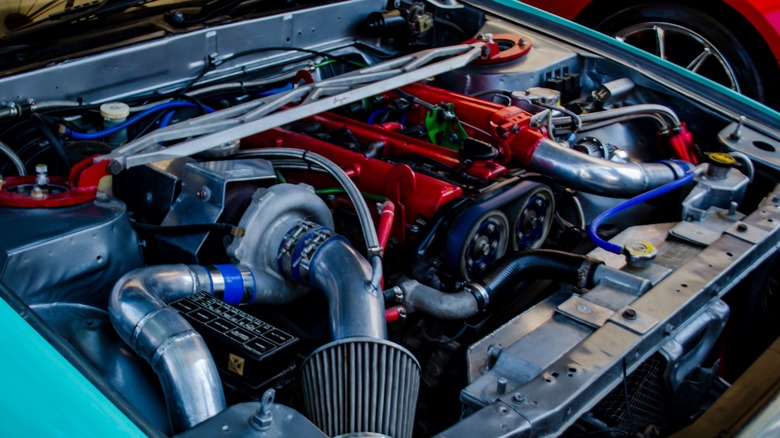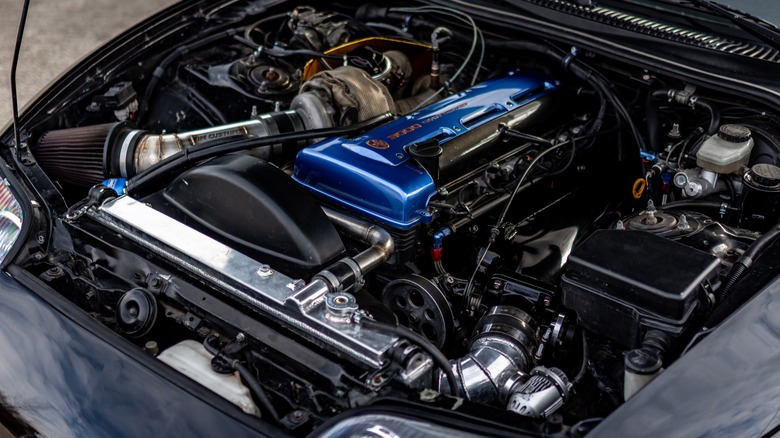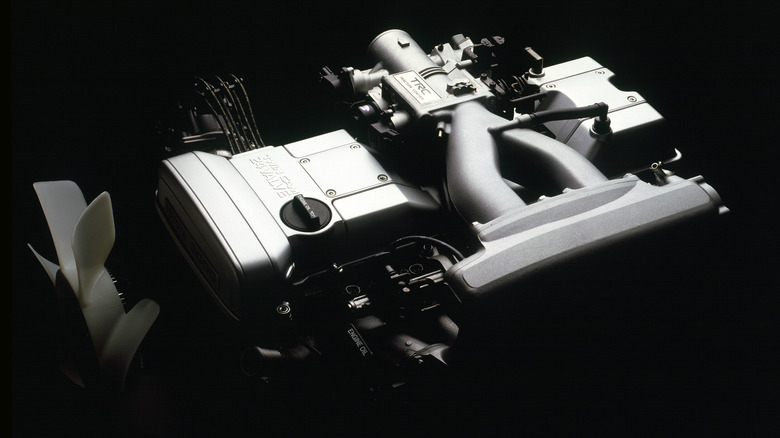Toyota 2JZ-GE, GTE, & FSE Engines – What's The Difference?
The legendary Toyota 2JZ engine family has all the right stuff – 3.0-liter displacement, six cylinders in a row, double overhead cams, four valves per cylinder, and a perfectly square bore/stroke ratio. Upgraded versions offered variable valve timing, twin turbos, and direct injection. Each version of this engine has its own unique performance profile. Whether we are talking about the 2JZ-GE, the 2JZ-GTE, or the 2JZ-FSE, there is an interesting story to tell.
First there is the 2JZ-GE. This normally aspirated inline six balances simplicity and reliability with performance. It has a lot in its favor, like a forged crankshaft, cast iron block, and hot-forged connecting rods. Running a 10:1 compression ratio and rated at 220 horsepower, the 2JZ-GE debuted in 1991. This engine powered many significant Toyota and Lexus vehicles, such as the non-turbo Toyota Supra MK IV, the Lexus IS 300, the Lexus GS 300, and the Lexus SC 300.
The 2JZ-GE is well-known for its stout construction, which makes it an excellent engine for high-horsepower modifications. Starting in 1998, the 2JZ engine family got an upgrade in the form of Dual VVT-i, a variable valve-timing system which provided enhanced efficiency and improved torque at low and medium rpms.
The 2JZ-GTE was the star of the show
Next is the twin-turbocharged 2JZ-GTE, found in U.S. 1993-98 Supra Turbos. This engine is best known as the 320-horsepower beast that made the MK IV Supra Turbo one of the coolest JDM cars ever built. Based on the very solid bones of the normally aspirated GE, Toyota engineers made some changes to handle the stresses of turbocharging, and the resulting 100 additional horsepower this engine produced. Recessing the tops of the pistons lowered the compression ratio to 8.5:1 and oil spray nozzles were added to cool the pistons. Sequential turbocharging was used, with one turbo providing a low-rpm boost from 1,800 rpm and the other kicking in at 4,000 rpm.
There were some notable differences in the 2JZ-GTE engines produced for export, compared to those made for the Japanese Domestic Market (JDM). The U.S. market engine had a higher output, with the JDM powerplant's 280 horsepower being significantly lower. The 2JZ-GTE's robust construction also made it a go-to engine for those seeking to double or triple its original output. Upwards of 2,000 horsepower has been seen on some builds with the original block, but with nearly everything else upgraded to achieve maximum power.
The 2JZ-FSE came later and was not made for performance
The third and last member of the 2JZ trio is the 2JZ-FSE, one of the most reliable Lexus engines ever built, which arrived in 2000. Unlike its siblings, the FSE had direct fuel injection for improved combustion efficiency, was VVT-i only, and had the family's highest compression ratio of 11.3:1. The FSE's output was the same as the GE, at 220 horsepower. The 2JZ-FSE was conceived as a normally-aspirated fuel-efficiency and low-emissions engine that could still maintain its performance. To its credit, the FSE could claim the lowest carbon emissions in the 2JZ family, and ran at extremely lean air-fuel ratios. The 2JZ-FSE was always paired with an automatic transmission, whether in a rear-wheel drive or all-wheel drive vehicle.
While the 2JZ engine family is sturdy, powerful, available, and easy to modify, it is not perfect. Some trouble areas include crankshaft pulleys that should be changed at 60,000-mile intervals, occasional failure of the oil pump seal, faulty timing belt tensioner brackets that can let the belt slip — fortunately it's a non-interference engine, and bad VSV actuators on the GTE's turbos.


